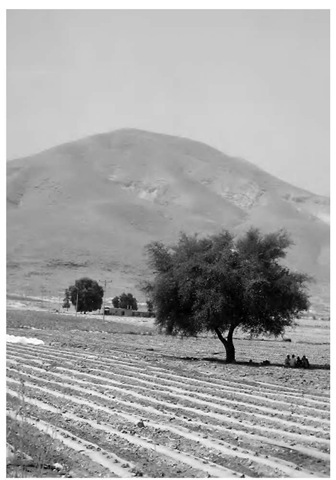Afforestation involves taking action to plant trees in an area that has never been a forest area or to restore a deforested area. The trees may be planted from seeds or from seedlings. Legally, afforestation includes the setting aside of forest land, or land to be reforested by law. Many national forests have been created in the last century. These forest areas may be designated as wilderness areas or as forest areas. In the case of the latter, they are usually multiuse areas. Some of the area in the forest will be used for recreation or for hunting, and other areas for timber operations.
On some land, such as this farm in Israel, afforestation will not occur naturally and requires mass planting programs.
The 18th and 19th centuries were times of enormous expansion of farming operations. In North America and in many places around the world, vast forests were cut down to create farms. In many areas of the eastern United States, the deforestation was extensive. In Vermont, for example, by 1900 about 80 percent of the land was being used for agricultural production, in particular for sheep herding. However, by 2000, farming had been greatly reduced and the state was over 80 percent forested. Some of the afforestation was due to the movement of people away from farming and into urban or town life.
Reforestation of Palestine began with the return of the first Jewish settlers in the late 1880s. After the creation of the state of Israel, a major tree-planting program began. The Kingdom of Jordan has also engaged in a widespread tree-planting effort. The deforestation there occurred under the Ottoman Empire because the Turks needed wood for their railroad steam engines. In Jordan, afforestation programs often encounter human resistance, as poor people see the forest as a resource for fuel and food for their goats. In Israel, Jordan, and other countries, afforestation cannot occur naturally as it can in an already well-watered area such as Vermont or the eastern half of the United States and Canada, generally. Deforestation in some places devastates the land because the removal of trees that held in moisture are no longer present, so the soil dries out so much that it is difficult for trees to re-establish themselves naturally. In tropical areas, the loss of forest cover may cause the soil to become so hard that water cannot penetrate it.
In some regions, deforestation, either followed by, or accompanied by, overgrazing, has led to desertification. In other areas, forests cannot be replanted because of the presence of people using the land for other purposes. Often, these uses are not as economical there as they would be if relocated. In Canada, Russia, and Iceland, afforestation programs have been used to replace the boreal forests.
It has been suggested that afforestation is a solution to global warming. However, there are a number of challenges to this claim. One challenge is that people, especially in third world countries, have little incentive to protect forests from destruction in order to save the planet from global warming. A second challenge is that, while forests lock up huge quantities of carbon dioxide, carbon dioxide emissions from many industrial sources are choking them. A third challenge is that while planting boreal forests will soak up vast quantities of carbon dioxide, the forests will also add to the heat of the planet because they absorb and retain energy.

